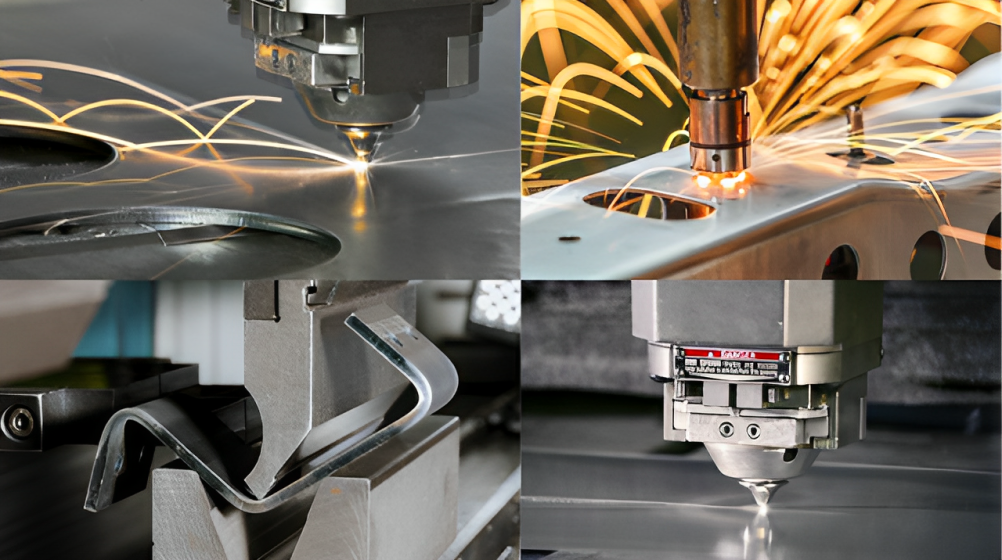How does the robot advance the development of Sheet Metal Fabrication
- 1 What is Sheet Metal Fabrication?
- 2 The Advantages of Robotics in Sheet Metal Fabrication:
- 2.1 Precision and Accuracy:
- 2.2 Increased Efficiency and Speed:
- 2.3 Complex Shapes and Designs:
- 2.4 Safety enhancements:
- 2.5 Cost Reduction:
- 3 The Limited of Robotics in Sheet Metal Fabrication:
- 4 The Future of Robotics and AI in Sheet Metal Fabrication
Technological developments have continuously been a key factor in transforming industries. Over the years, advancements in technology have significantly transformed the way sheet metal is processed and manipulated. sheet metal fabrication plays a vital role in creating a wide range of products, from automotive parts to household appliances. One of the most significant game-changers in this industry has been the integration of robotics. The integration of robotics has had a major impact on the sheet metal fabrication industry. Robots have made it possible to produce parts with greater precision, speed, and cost-effectiveness.
What is Sheet Metal Fabrication?
Before knowing the position of the robot in sheet metal fabrication, it is very important to grasp the system itself. Sheet metal fabrication is a producing method used to convert flat sheets of metal into diverse shapes and structures. Typically, this process includes reducing, bending, and assembling metal sheets to create components or products including vehicle parts, home equipment, and plane components. These sheets are usually made of metals such as steel, aluminum, or copper and come in various thicknesses measured by gauge. Sheet metal fabrication involves cutting, bending, shaping, welding, and assembling these sheets to produce items that adhere to precise requirements.
The Advantages of Robotics in Sheet Metal Fabrication:
The integration of robotics into the sheet metal fabrication process offers many benefits that are revolutionizing the industry:
Precision and Accuracy:
Robots are renowned for their ability to perform tasks with unparalleled precision and consistency. In sheet metal fabrication, precision is paramount, as even minor errors can result in product defects. Robots excel in cutting, bending, and welding with precision, ensuring that each piece meets the exact specifications, reducing waste, and increasing product quality.
Increased Efficiency and Speed:
Robots can work tirelessly without breaks or fatigue, leading to increased production efficiency and shorter lead times. Automation allows for 24/7 operation, making it possible to meet tight deadlines and high-demand requirements.
Complex Shapes and Designs:
Sheet metal fabrication often involves intricate shapes and designs that can be challenging for human workers to execute consistently. Robots can easily deal with complex geometries, resulting in products that are both useful and aesthetically desirable.
Safety enhancements:
Dangerous tasks such as welding and heavy lifting can put human workers at risk. By delegating those tasks to robots, protection is greatly stepped forward, and the chance of place of job accidents is decreased.
Cost Reduction:
While the initial investment in robotic systems can be substantial, the long-term cost savings are significant. Robots reduce labor costs, minimize material waste, and increase overall production efficiency, ultimately leading to improved profitability.
The Limited of Robotics in Sheet Metal Fabrication:
Despite the numerous advantages of integrating robotics into sheet metal fabrication, there are several limitations that must be considered:
High Initial Costs:
Implementing robotic systems in sheet metal fabrication requires a significant upfront investment in equipment, programming, and maintenance. Smaller businesses may find it challenging to justify these costs.
Programming Complexity:
While robots are incredibly precise, programming them to perform specific tasks can be complex and time-consuming. Skilled technicians are required to set up and maintain these systems.
Limited Adaptability:
Robots are highly specialized and may struggle to adapt to new tasks or product designs without significant reprogramming and retooling.
Human Collaboration:
Some complex tasks still require the skills and problem-solving skills of human workers. Robots lack the human touch needed for tasks that involve fine adjustments or handling delicate materials.
The Future of Robotics and AI in Sheet Metal Fabrication
Robotics and artificial intelligence (AI) have a bright future in the manufacturing of sheet metal as technology develops. We can anticipate the following trends and developments in the future:
AI-powered automation:
AI algorithms are increasingly being used to improve robotic operations. These algorithms make real-time adjustments based on data from sensors and cameras, enabling the robot to adapt to changing conditions and continuously increase performance.
Collaborative Robots (Cobots):
Cobots will become more sophisticated and able to work alongside human operators. This high-level collaboration will make the sheet metal production process more flexible and enable humans and robots to easily leverage each other’s capabilities.
Additive Manufacturing Integration:
3D printing and additive manufacturing technologies will continue to evolve. Robots will play a central role in these processes, enabling the creation of complex sheet metal components directly from digital designs.
Data-Driven Decision-Making:
AI-driven analytics will help manufacturers optimize their processes by analyzing vast amounts of data collected from robotic systems. As a result, efficiency and quality control will be enhanced.
Environmental Sustainability:
Robots can be designed to use materials more efficiently, produce less waste, and use less energy. This environmentally conscious approach aligns with the global push for more sustainable sheet metal fabrication practices.
Conclusion:
Robots are fundamentally reshaping the sheet metal fabrication panorama, providing precision, efficiency, value savings, and advanced safety. Although demanding situations and limitations stay, ongoing advances in robotics and AI promise to propel the enterprise to new heights. As generation advances, sheet steel fabrication will become even extra applicable, green, and environmentally sustainable cementing its status as a cornerstone of modern manufacturing. Businesses that embrace these developments are poised to gain a competitive edge in an increasingly automated and interconnected world.

















